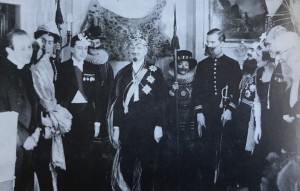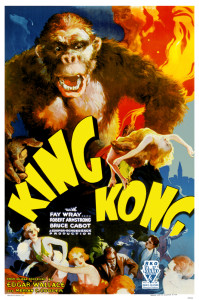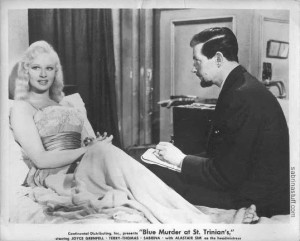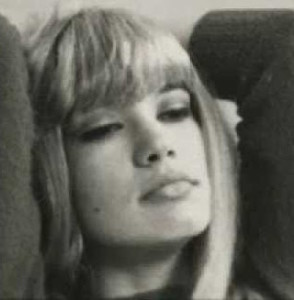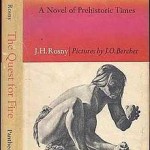 La Guerre du Feu, an early fantasy novel, probably written by Joseph Henri Honore Boex (1856 – 1940), one of two Belgian brothers who often wrote fiction together under the pseudonym J.H Rosny-Aine. was published in 1911 by the Bibliotheque-Charpentier in Paris. It is said to have been first translated into English by Harold Talbott in 1967. If this is true, it is odd that the acclaimed journalist and translator Eric Mosbacher in his note of 8.5.1979 ( shown) stated that this ‘ remarkably uninspired story’ was ‘ totally undeserving of translation ‘ and that the Souvenir Press should decline it. It is possible, of course, that a translation into a language other than English was proposed. Mosbacher translated from French, Italian and German.
La Guerre du Feu, an early fantasy novel, probably written by Joseph Henri Honore Boex (1856 – 1940), one of two Belgian brothers who often wrote fiction together under the pseudonym J.H Rosny-Aine. was published in 1911 by the Bibliotheque-Charpentier in Paris. It is said to have been first translated into English by Harold Talbott in 1967. If this is true, it is odd that the acclaimed journalist and translator Eric Mosbacher in his note of 8.5.1979 ( shown) stated that this ‘ remarkably uninspired story’ was ‘ totally undeserving of translation ‘ and that the Souvenir Press should decline it. It is possible, of course, that a translation into a language other than English was proposed. Mosbacher translated from French, Italian and German.
Mosbacher’s description of the original novel reflects his utter disdain for it; the final line of his summary: ‘the caste (sic) also includes mammoths, tigers, etc’ says it all. Nevertheless, the producer of the movie, set in palaeolithic Europe, and based on the translation, seems to have been happy with the story, and ‘The Quest for Fire’ , with a budget of $12m, a director in Jean-Jacques Arnaud, and a cast that included the facially challenged Ron Perlman in his debut role and Rae Dawn Chong as the love interest, was released in 1981. It made $40m at the box office, gave Chong a well deserved award for her performance and garnered an Academy Award for make –up. Not bad, considering that the dialogue was restricted to grunts and shrieks. It launched the movie careers of both Chong and Perlman, with the latter starring as the deformed, simian-like creature Salvatore in The Name of the Rose.
It is not known whether Mosbacher ever saw the movie (unlikely) or that he regretted not accepting the invitation to translate it, if indeed the job had been offered to him. He and his wife, Gwenda David, also a translator and who incidentally I visited in her Hampstead home years later, continue to work together until his death in 1997. [R.M.Healey]


